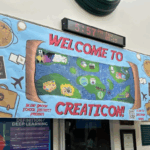A growing environmental issue is quietly threatening the future of clean drinking water in New York City and parts of Westchester County. Road salt, used to keep highways safe and clear of ice in the winter, has been draining into and increasing the salinity levels of reservoirs in Hudson Valley. This drastic increase has the potential to make the water in these reservoirs undrinkable within a few decades.
A recent report by the New York City Department of Environmental Protection (DEP) found that chlorine levels in the New Croton reservoir have tripled since the 1990s. While salt is essential for keeping roads and sidewalks safe in icy conditions, its long-term impact on freshwater sources is raising the concerns of many environmental experts, who are urging officials to reconsider how roads are treated to prevent further contamination. Excessive salt in drinking water can pose serious health risks to humans, including hypertension, while also damaging local ecosystems and wildlife. Fish and aquatic flora in affected watersheds also struggle to survive and adapt to high-salinity environments, further disrupting the natural balance.
Throughout the winter season, large quantities of road salt are spread on highways in the lower Hudson Valley to prevent accidents caused by conditions on the road. Further, rain and melting snow wash this salt into nearby streams and watersheds, causing chlorine levels to rise. This problem is particularly severe in the reservoirs located in Westchester County, which serve millions of residents in the county and in New York City. If current trends continue, experts warn that some reservoirs in the region could exceed federally recommended chloride levels within the next two decades. In Westchester County, local environmental groups, such as Riverkeeper, have raised alarms about salt infiltration in reservoirs like Kensico and Croton, both of which are critical to the New York City water supply system.
Attempts to mitigate the crisis have begun primarily at the municipal level. Several towns, including Greenburgh and Yorktown, have implemented “smart salting” practices, which involved calibrating spreaders, pre-wetting salt to reduce bounce and scatter, and using brine solutions to minimize overall salt use. However, experts caution that these efforts are not yet widespread enough to make a measurable difference in large watershed systems.
Meanwhile, the long-term health implications are becoming increasingly clear. Elevated sodium levels in drinking water post significant risks for people with high blood pressure, heart, disease, or kidney conditions. According to the Environmental Protection Agency (EPA), sodium concentrations above 20 mg/L may require consultation with a doctor for those salt restricted diets. In some parts of the Hudson Valley, sodium levels in tap water have already exceeded this advisory limit, prompting bottled water advisories for vulnerable residents.
Advocates are calling for stricter regulations on road salt use, increased state funding for watershed protection and mandatory water quality monitoring in salt sensitive areas.






